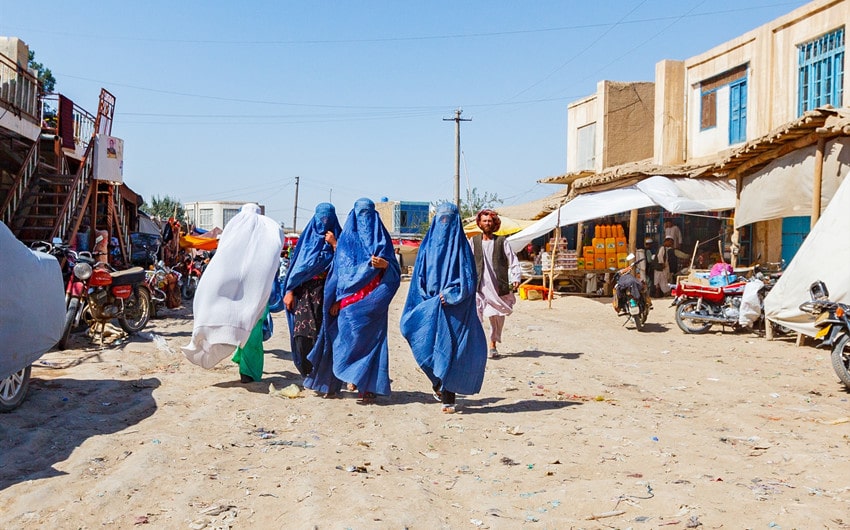Most Dangerous Countries to Travel To: Safety Risks, Regional Warnings, and Smarter Alternatives
Travel is often about freedom, curiosity, and discovery. But not every destination is safe to explore at all times. Some countries face serious threats—armed conflict, terrorism, violent crime, and political instability—that put visitors at greater risk. If you’re planning an adventure, understanding which countries are considered high-risk and why can help you make more informed, responsible decisions. This comprehensive guide unpacks the most dangerous countries to travel to, what makes them hazardous, how risks differ by region, and safer alternatives you might consider.
1. What Makes a Country Dangerous for Travelers?
There’s no single factor that determines danger. Instead, countries are flagged by international agencies based on a combination of threats that affect both citizens and foreign visitors. These include:
- Armed conflict: Civil wars, insurgencies, and clashes between government and rebel forces can disrupt entire regions, making travel extremely unsafe.
- Terrorism: Some destinations face constant threats of attacks on public areas, transportation, hotels, and foreign embassies.
- Political instability: Unpredictable regimes, widespread protests, coups, and corruption can lead to rapid changes in safety conditions.
- Violent crime: Kidnappings, robberies, sexual assaults, and carjackings often target tourists in certain areas.
- Poor infrastructure: Inadequate healthcare, unreliable emergency services, and poor roads amplify risk if anything goes wrong.
- Natural disasters and disease outbreaks: Some countries have frequent earthquakes, hurricanes, or endemic diseases that travelers aren’t prepared for.
It’s also important to recognize that danger is not always nationwide. One region may be highly dangerous while others are relatively safe and stable.
2. Countries Commonly Considered Dangerous for Travel (as of 2025)
This list includes countries with high-level travel warnings from the U.S. Department of State, the UK Foreign Office, and other reliable international advisories. For each country, you’ll learn not just that it’s dangerous—but why.
1. Afghanistan
With ongoing Taliban rule, frequent bombings, targeted killings, and total lack of consular support, Afghanistan is considered one of the most hazardous places for foreigners. The capital Kabul remains volatile, and regional provinces see regular conflict and extremist activity. Infrastructure is severely degraded, and women face significant restrictions.
2. Syria
A decade of civil war has devastated Syria. Parts of the country remain under government control, while others are dominated by rebel groups or extremists. Risk of kidnapping, airstrikes, and terrorism is high. Entry requirements are unclear, and Western consulates offer little to no help.
3. Yemen
Due to an ongoing humanitarian crisis, civil war, and Saudi-led airstrikes, Yemen is considered extremely dangerous. Basic services have collapsed, and malnutrition and disease outbreaks are rampant. Terror groups operate openly in some areas, and all non-essential travel is strongly discouraged.
4. Somalia
Though parts of Mogadishu are seeing slow stabilization, most of Somalia remains under threat from Al-Shabaab. Kidnapping of foreigners is common, and many areas lack any form of governance or emergency services. Maritime piracy also continues to be an issue off the Somali coast.
5. South Sudan
The world’s newest country has been plagued by ethnic violence, civil unrest, and displacement since independence. Many areas are inaccessible due to conflict. Health facilities are rare, and foreign nationals have been caught in clashes or arrested arbitrarily.
6. Central African Republic (CAR)
Armed groups continue to control much of the CAR. Despite the presence of UN peacekeepers, attacks on civilians and aid workers are common. Robbery, carjacking, and kidnapping are high risks in nearly every region.
7. Mali
In recent years, northern and central Mali have become hubs for jihadist groups. Westerners have been kidnapped or killed, even in formerly safe areas like Bamako. Military coups have added to instability, and travel is considered very high risk outside the capital.
8. Venezuela
Venezuela’s severe economic collapse has led to shortages of medicine, fuel, and basic goods. Violent crime—including express kidnappings, armed robbery, and police abuse—is rampant. Power outages and hospital failures make it dangerous even for basic health emergencies.
9. Iraq
While some cities like Erbil in the Kurdish region are relatively safe, large parts of Iraq still deal with bombings, sectarian violence, and militia activity. ISIS remnants remain active, and travelers are often caught in military or insurgent crossfire. Entry without extensive knowledge and contacts is highly discouraged.
10. North Korea
Although guided tours are technically permitted, travelers to North Korea face the risk of imprisonment for even minor infractions. There is no access to independent legal representation or consular support from most Western nations. Any political commentary or disobedience can lead to indefinite detention.
3. Dangers Within Countries: Regional Variations
It’s important to understand that risk isn’t always nationwide. Some areas are very dangerous, while others may be tourist-friendly. Here are a few examples:
- Mexico: Popular tourist regions like Cancun or Tulum are generally safe, but states like Guerrero and Michoacán are hotspots for cartel violence and kidnapping.
- India: While most of the country is safe for travelers, parts of Jammu & Kashmir face military conflict and terrorism threats.
- Colombia: Major cities like Medellín and Bogotá are safer than ever, but rural areas near the Venezuelan border remain volatile.
- Philippines: Manila and popular islands like Palawan are safe, but Mindanao and Sulu archipelago are high-risk due to insurgent activity.
Before writing off a destination completely, check government advisories by region—not just by country.
4. Tools for Monitoring Travel Safety
You can stay informed using these trusted sources before and during your trip:
- U.S. Department of State Travel Advisories – Offers updated rankings from Level 1 (Exercise Normal Precautions) to Level 4 (Do Not Travel).
- UK Foreign Travel Advice – Detailed regional guidance and real-time security alerts.
- Canada Travel Advisory – Includes safety ratings, entry rules, and health risks.
- Australia’s Smartraveller – Clear advice on risks, local laws, and consular assistance.
These sites are frequently updated and offer information on safety, health, transportation, and emergency services for each country.
5. How to Stay Safe in High-Risk Destinations
If you still need to travel to a dangerous country—for work, humanitarian missions, journalism, or family—these precautions can reduce your risk:
- Hire a local guide: Use trusted contacts or agencies familiar with local threats and terrain.
- Register with your embassy: U.S. citizens can use the STEP program to receive alerts and make emergency contact easier.
- Secure travel insurance: Ensure it covers high-risk destinations, emergency evacuation, and medical emergencies.
- Don’t post real-time updates: Delay sharing your location on social media to avoid unwanted attention.
- Learn local emergency numbers: Memorize or store contacts for police, ambulance, and your embassy or consulate.
High-risk travel is sometimes necessary, but it should never be casual. Preparation is survival.
6. Safer Alternatives That Offer Similar Experiences
If you’re interested in exploring certain cultures or landscapes but are unsure about safety, consider these alternatives:
- Instead of Iraq → Try Jordan: Ancient ruins, deserts, and Middle Eastern hospitality without the instability.
- Instead of Venezuela → Try Ecuador: Andean peaks, Amazon rainforests, and vibrant cities with better infrastructure.
- Instead of Yemen → Try Oman: Beautiful desert scenery, rich culture, and far more stable government.
- Instead of Afghanistan → Try Georgia: Dramatic mountains, deep history, and safe travel routes.
There’s often a way to experience a region’s spirit without putting yourself at serious risk.
Smart Travel Means Informed Travel—Not Fearful Travel
Exploring the world doesn’t mean ignoring danger—it means navigating it with eyes wide open. You don’t need to avoid every high-risk country forever, but you do need to understand the situation on the ground, follow professional guidance, and protect yourself with knowledge, planning, and common sense. Because the most unforgettable trips should be remembered for the right reasons.







